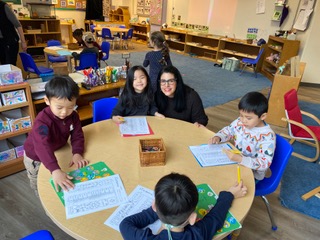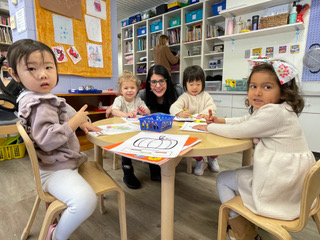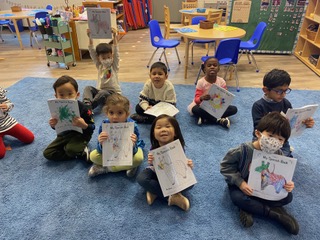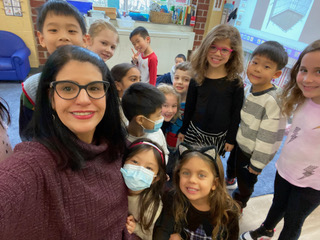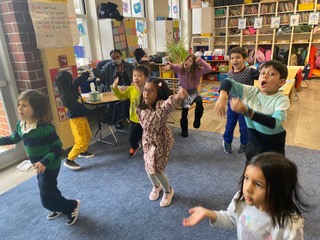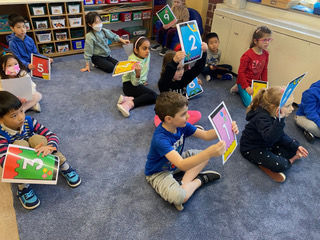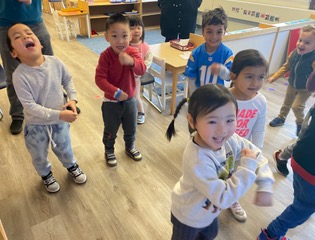Students in Señora García-Levitas’s Spanish classes are learning high-frequency vocabulary on a variety of topics that will be expanded upon in the coming years. In Preschool 3, Preschool 4, and Kindergarten, students just completed a unit on counting from 0-10. Throughout this unit, students learned how to pronounce the numbers, or números, correctly in Spanish, how to sing songs using numbers, how to spell these numbers by tracing or writing them, how to identify different numbers that are not in their original sequence, how to use their auditory skills to listen for the correct number in a song to demonstrate their knowledge, and they danced to songs that emphasized numbers in Spanish.
When these students reach first and second grade, students will use their prior knowledge of numbers to count higher quantities and to complete math exercises in Spanish. Studies show that when we do math exercises, we are subjecting our brain to new challenges, and when we do it in another language, we are increasing our cognitive flexibility. This allows us to train our memory, response speed, and simplification ability.
Through learning mathematics in another language, students form the ability to make more precise decisions, as they pay more attention to what they hear or read and motivate themselves to think in a different way. Additionally, they will learn more about other cultures and the differences that exist in their mathematical systems, such as the fact that in Spanish, a period is used instead of a comma to indicate value, e.g., In Spanish, one thousand would be 1.000, rather than the form of 1,000 that we use in the United States.
Students have learned that math can act as a universal language, as a phrase or formula has the same meaning, regardless of the language that accompanies it. In this way, math helps people to learn and communicate, even if other communication barriers exist. Students enjoyed counting, singing, dancing, and simply having fun with números.

